Brief overview of cottage cheese pasta dishes.
Cottage cheese pasta dishes offer a unique blend of creaminess and nutritional benefits, making them a favorite among health-conscious individuals and food enthusiasts alike. This versatile ingredient adds a smooth, rich texture to pasta sauces without the high fat content of traditional cream-based sauces. Whether used in a simple sauce, as a protein-packed addition to baked pasta dishes, or as a light alternative to ricotta in lasagna, cottage cheese pairs beautifully with a variety of herbs, spices, and vegetables.
Table of Contents
How to Make the Creamiest Cottage Cheese Pasta Sauce at Home
Nutritional Benefits of Cottage Cheese Pasta Dishes
Cottage cheese pasta dishes are not only delicious but also highly nutritious, making them a great option for a variety of audiences. Here’s why they appeal to health-conscious eaters, families, and even those with specific dietary preferences:
1. High Protein Content
- Cottage cheese is rich in protein, with approximately 12-14 grams of protein per half cup. This makes it an excellent ingredient for those looking to build muscle, maintain energy levels, or simply enjoy a satisfying meal.
2. Low in Fat and Calories
- Compared to heavy cream or full-fat cheeses, low-fat cottage cheese contains fewer calories (around 100 calories per half cup) and significantly less fat, making it ideal for weight management without sacrificing flavor.
3. Rich in Calcium and Bone-Boosting Nutrients
- Cottage cheese is a good source of calcium, essential for maintaining strong bones and teeth. A single serving provides approximately 8-10% of the daily recommended calcium intake.
4. Low Carbohydrate Option
- With only 3-4 grams of carbohydrates per serving, cottage cheese is a great addition for low-carb or keto-friendly pasta recipes.
5. Supports Gut Health
- Many cottage cheese products contain probiotics, which help improve digestion and support gut health. Pairing this with whole-grain pasta can enhance dietary fiber intake for a well-rounded meal.
Appeal to Different Audiences
Families and Busy Cooks
- Cottage cheese pasta dishes are quick to prepare and versatile, appealing to families with limited time. Kids enjoy the creamy texture and mild taste, while parents appreciate the balanced nutrition.
Fitness Enthusiasts
- High in protein and low in fat, these dishes are ideal for post-workout meals or as a healthy way to fuel the body. Adding lean proteins like grilled chicken or turkey further enhances the meal’s benefits.
Weight Watchers
- The low-calorie nature of cottage cheese sauces makes them a guilt-free option for individuals aiming to lose or maintain weight. Swapping traditional cream or cheese sauces with cottage cheese is a healthier alternative.
Vegetarians
- Cottage cheese provides a substantial protein source for vegetarians, making it a perfect replacement for meat-based pasta dishes. Adding vegetables like spinach, tomatoes, or mushrooms boosts the nutritional profile.
Individuals with Dietary Restrictions
- Cottage cheese pasta is naturally gluten-free when paired with gluten-free pasta and can be adapted for lactose intolerance using lactose-free cottage cheese.
Food Enthusiasts and Home Cooks
- Cottage cheese’s versatility allows endless customization, from savory baked ziti to creamy pesto-infused sauces, appealing to those who love experimenting in the kitchen.
This combination of nutrition and adaptability makes cottage cheese pasta dishes an excellent choice for a wide range of dietary needs and culinary preferences.
Why Choose Cottage Cheese for Pasta?
Cottage cheese is a versatile and nutritious choice for creating delicious pasta dishes. Here’s why it stands out as an ingredient:
Health Benefits: High Protein, Low Fat
- High Protein Content
- Cottage cheese is packed with protein, offering about 12-14 grams per half cup. This makes it an excellent option for building and repairing muscles, maintaining energy levels, and keeping you fuller for longer. It’s particularly appealing to fitness enthusiasts and those following high-protein diets.
- Low Fat and Calorie Count
- Unlike heavy cream or full-fat cheeses, low-fat cottage cheese contains less than 2 grams of fat per serving while retaining its creamy texture. This makes it ideal for anyone looking to enjoy indulgent pasta dishes without excessive calories or saturated fats.
- Rich in Nutrients
- Cottage cheese is a great source of calcium, which supports bone health, and contains other essential vitamins like vitamin B12 and phosphorus, which aid in energy production and metabolism.
- Supports Weight Management
- Due to its low calorie and high protein profile, cottage cheese pasta sauces are ideal for weight watchers, helping them enjoy flavorful dishes while staying within their calorie goals.
- Low-Carb Option
- With only about 3-4 grams of carbs per serving, cottage cheese is suitable for low-carb and ketogenic diets, offering a healthy alternative to traditional pasta toppings like Alfredo or marinara sauces.
Taste and Texture Advantages
- Creamy Yet Light
- Cottage cheese provides a naturally creamy consistency that works perfectly in pasta sauces. Its lightness makes it less heavy than traditional cream or butter-based sauces, ensuring the dish is flavorful without feeling overly rich.
- Mild Flavor That Adapts Well
- The neutral taste of cottage cheese allows it to absorb the flavors of other ingredients like garlic, basil, or tomatoes. This makes it a versatile base for a variety of pasta dishes.
- Better Texture in Sauces
- When blended, cottage cheese achieves a smooth, velvety texture that mimics cream-based sauces, perfect for fettuccine, penne, or even lasagna.
- Substitute for Traditional Cheese
- Cottage cheese offers a healthier alternative to cream cheese, ricotta, or mascarpone in pasta recipes. It can replace high-fat cheeses without compromising taste or texture, making dishes like baked ziti or stuffed shells lighter yet still indulgent.
- Enhances Pasta Dishes Without Overpowering Them
- Unlike sharper cheeses like cheddar or Parmesan, cottage cheese complements rather than dominates the other flavors in your pasta dish. This balance makes it ideal for recipes with delicate ingredients like spinach or mushrooms.
Choosing cottage cheese for pasta isn’t just a healthy decision—it’s also a delicious one. Its creamy consistency, adaptability, and nutritional benefits make it a win-win for your next pasta night.
How to Make Cottage Cheese Pasta Sauce
Cottage cheese pasta sauce is a versatile, nutritious, and creamy base for countless pasta dishes. Here’s how to prepare variations of this delicious sauce and tips to achieve the perfect consistency.
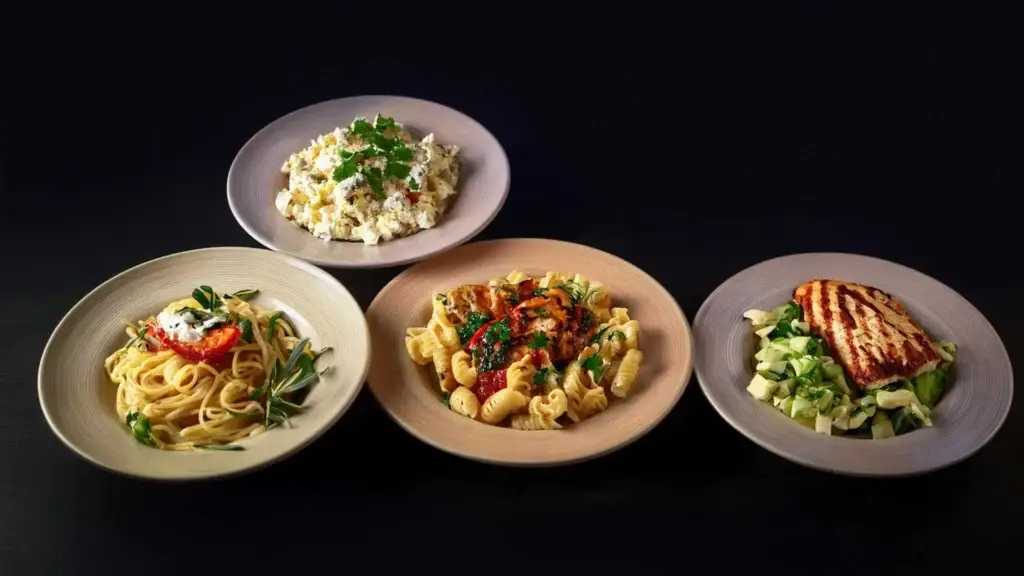
Recipe Variations
- Basic Cottage Cheese Pasta Sauce
- Ingredients: Cottage cheese, garlic, olive oil, salt, pepper.
- Method: Blend cottage cheese with a bit of olive oil and minced garlic until smooth. Season with salt and pepper to taste. Toss with hot pasta, allowing the heat to warm the sauce.
- Creamy Cottage Cheese Sauce
- Ingredients: Cottage cheese, milk or cream, Parmesan cheese, butter, garlic, and nutmeg.
- Method: Blend cottage cheese with milk until creamy. Sauté garlic in butter, then add the cottage cheese mixture and a touch of nutmeg for depth. Stir in Parmesan cheese for extra richness and toss with pasta.
- Cottage Cheese Sauce with Vegetables
- Ingredients: Cottage cheese, spinach, sun-dried tomatoes, garlic, olive oil, and lemon zest.
- Method: Sauté garlic and spinach in olive oil until wilted. Blend cottage cheese with lemon zest and mix with the cooked vegetables. Stir into hot pasta, adding a sprinkle of Parmesan or chili flakes for flavor.
- Herbed Cottage Cheese Sauce
- Ingredients: Cottage cheese, fresh basil, parsley, garlic, and olive oil.
- Method: Blend cottage cheese with olive oil, fresh herbs, and garlic for a light, herbaceous sauce perfect for summer pasta dishes.
Tips for Achieving the Perfect Consistency
- Blending Technique
- Use a high-speed blender or food processor to puree cottage cheese for a silky, lump-free texture.
- Adjusting Thickness
- Add liquids like milk, vegetable broth, or pasta water a little at a time to control the sauce’s thickness. Use pasta water for added starch that helps the sauce cling to pasta.
- Enhancing Creaminess
- For extra creaminess, stir in a small amount of cream, Greek yogurt, or mascarpone. For a vegan alternative, use plant-based cottage cheese or cashew cream.
- Balancing Flavors
- Since cottage cheese is mild, balance the flavor with bold ingredients like garlic, lemon zest, Parmesan, or spices like paprika or nutmeg.
- Timing and Heat
- Toss the sauce with hot pasta right before serving to prevent it from drying out or separating. Avoid overheating, as cottage cheese can lose its creamy texture when overcooked.
These variations and tips allow you to customize the sauce to your preferences, whether you prefer it light and fresh or rich and indulgent. Let me know if you’d like a detailed breakdown of a specific variation!
Classic Cottage Cheese Pasta Recipes
Here are three delicious and classic pasta recipes featuring cottage cheese. These dishes are simple, nutritious, and perfect for a variety of occasions.
1. Spaghetti with Cottage Cheese Sauce
Ingredients:
| Ingredient | Quantity |
|---|---|
| Spaghetti | 400g |
| Cottage cheese | 1 cup |
| Garlic (minced) | 2 cloves |
| Olive oil | 2 tbsp |
| Lemon juice | 1 tbsp |
| Salt and black pepper | To taste |
| Fresh basil (optional) | For garnish |
Instructions:
- Cook spaghetti to how your pack directs you or until firm/ al dente. Reserve ½ cup of pasta water.
- In a blender, combine cottage cheese, garlic, olive oil, and lemon juice. Blend until smooth.
- Toss the cooked spaghetti with the cottage cheese sauce, using reserved pasta water to adjust consistency.
- Season with salt and pepper, and garnish with fresh basil if desired. Serve immediately.
2. Fettuccine Alfredo with Cottage Cheese
Ingredients:
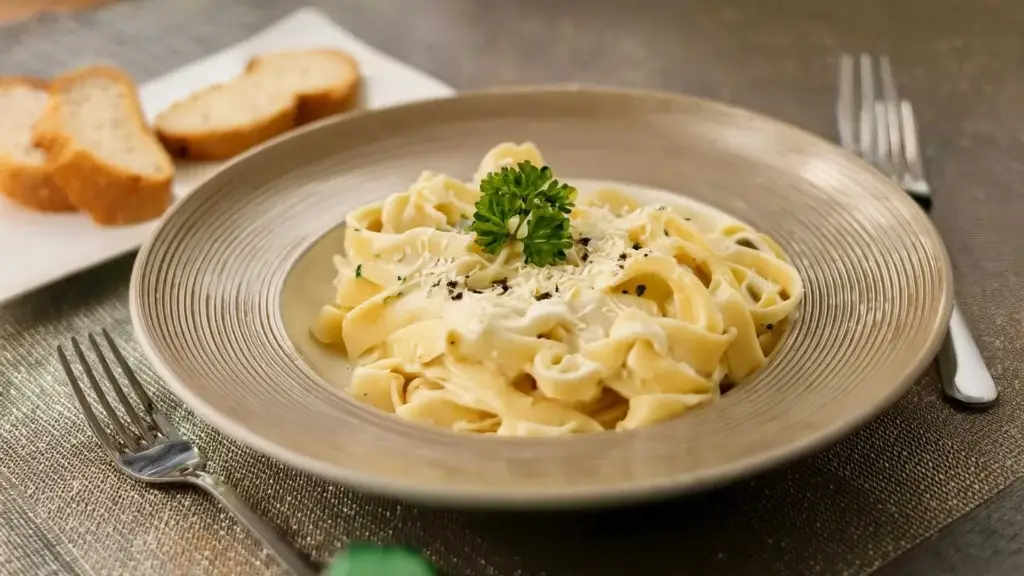
| Ingredient | Quantity |
|---|---|
| Fettuccine | 300g |
| Cottage cheese | 1½ cups |
| Milk | ½ cup |
| Parmesan cheese | ¼ cup |
| Butter | 2 tbsp |
| Garlic powder | ½ tsp |
| Nutmeg (optional) | A pinch |
| Salt and pepper | To taste |
Instructions:
- Cook fettuccine until al dente. Reserve ½ cup of pasta water.
- Blend cottage cheese with milk until smooth.
- In a pan, melt butter and stir in the garlic powder and nutmeg. Add the blended mixture.
- Stir in Parmesan cheese until melted. It is still very thick, so if it necessary, add pasta water to the sauce.
- Toss the fettuccine with the sauce, adjust seasoning, and serve warm.
3. Vegetarian Pasta with Spinach and Cottage Cheese
Ingredients:
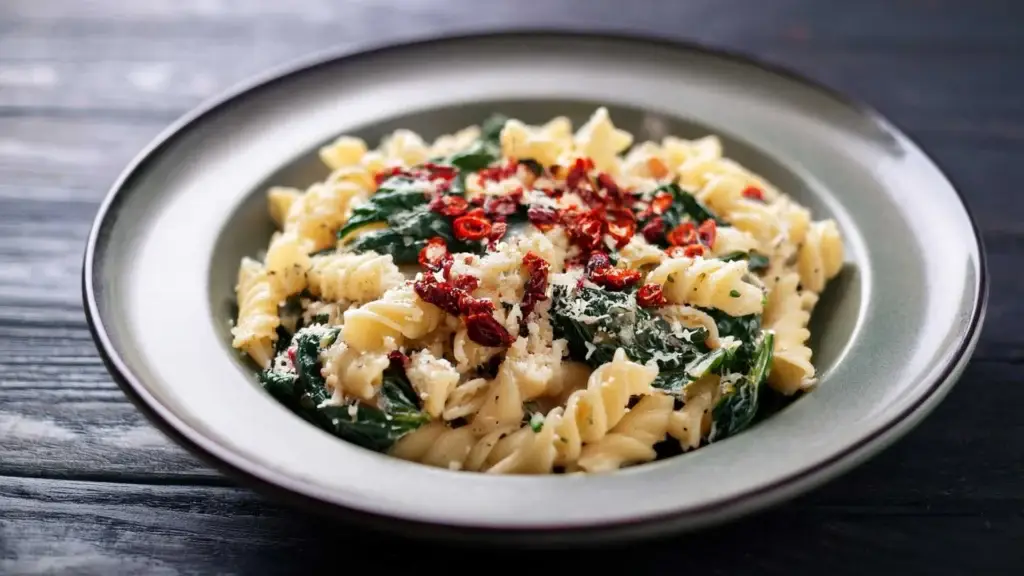
| Ingredient | Quantity |
|---|---|
| Pasta (penne or rigatoni) | 300g |
| Cottage cheese | 1½ cups |
| Fresh spinach (chopped) | 2 cups |
| Garlic (minced) | 2 cloves |
| Olive oil | 2 tbsp |
| Cherry tomatoes (halved) | 1 cup |
| Lemon zest | 1 tsp |
| Red chili flakes | ¼ tsp |
| Salt and black pepper | To taste |
Instructions:
- Cook pasta as directed on the package. Reserve ½ cup of pasta water.
- Sauté garlic in olive oil until fragrant. Add spinach and cook until wilted. Add cherry tomatoes and mix, cook for 2-3 minutes.
- Blend cottage cheese with lemon zest until creamy. Mix it into the sautéed vegetables.
- Toss in cooked pasta, adding reserved pasta water to adjust the sauce.
- Season with chili flakes, salt, and pepper. Serve hot.
These recipes are easy to customize with your favorite herbs, spices, or protein. Let me know if you’d like to adapt them further!
Creative Twists on Pasta with Cottage Cheese
Cottage cheese pasta is a versatile dish that serves as a blank canvas for adding flavors and textures. Here are some creative ways to elevate this classic recipe by incorporating herbs, spices, roasted vegetables, or grilled chicken.
1. Adding Herbs and Spices
Fresh Herbs:
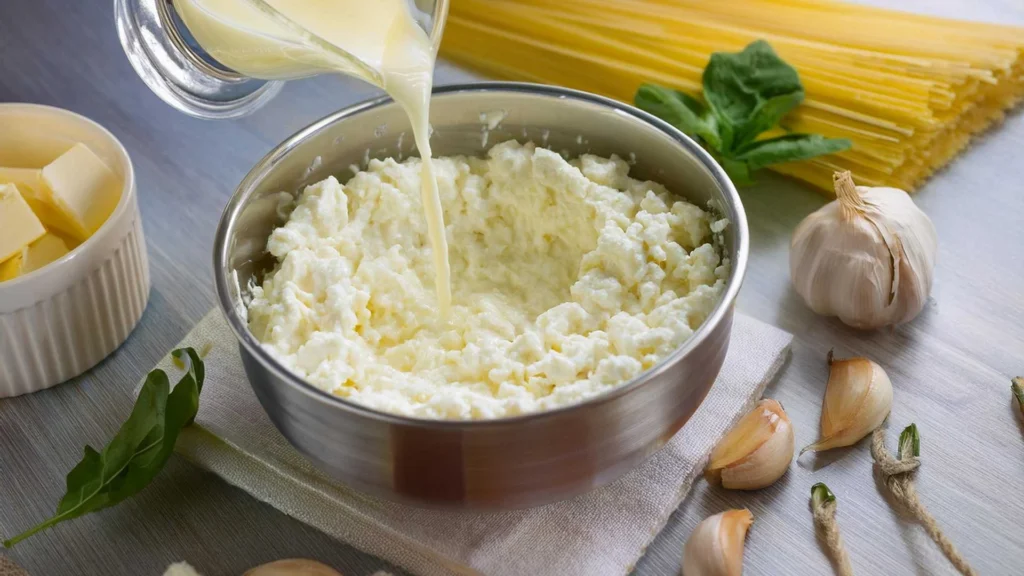
- Basil: Brings a sweet, aromatic touch. Blend it into the sauce for a pesto-inspired cottage cheese pasta.
- Parsley: Adds freshness and balances the creamy texture. Use as a garnish or mix it in for a bright finish.
- Thyme or Oregano: Perfect for a Mediterranean twist; mix these earthy herbs into the sauce or sprinkle on top.
Spices:
- Garlic Powder or Minced Garlic: Enhances the savory notes of the cottage cheese.
- Paprika or Smoked Paprika: Adds a subtle smoky flavor and a pop of color.
- Nutmeg: A pinch of nutmeg works wonders in creamy sauces, adding depth and warmth.
- Red Chili Flakes: For a spicy kick, sprinkle chili flakes over the dish or mix them into the sauce.
Lemon Zest:
- Infuse brightness into the dish with freshly grated lemon zest. It cuts through the richness of the cottage cheese.
2. Mixing with Roasted Vegetables or Grilled Chicken
Roasted Vegetables:
- Bell Peppers and Zucchini: Roast these with olive oil, salt, and pepper for a sweet, caramelized flavor. Toss them with pasta and cottage cheese sauce for a hearty vegetarian option.
- Cherry Tomatoes: Roast until blistered to add a burst of sweetness and acidity. Mix into the pasta for a vibrant dish.
- Broccoli or Cauliflower: Roast with garlic and Parmesan for a nutty, slightly crunchy addition.
- Mushrooms: Sauté or roast for an earthy, umami flavor that pairs perfectly with creamy cottage cheese sauce.
Grilled Chicken:
- Marinate chicken breasts in olive oil, garlic, and Italian herbs, then grill until tender and juicy. Slice and toss with pasta for added protein and flavor.
- For extra flavor, season the chicken with paprika or a lemon-herb blend before grilling.
Optional Add-Ins:
- Grilled Shrimp: For a seafood twist, grill shrimp with garlic and parsley, and mix with pasta and cottage cheese.
- Crispy Pancetta or Bacon: Crumble these over the dish for a crunchy, salty contrast.
Serving Tips:
- Finish with a drizzle of olive oil or a sprinkle of grated Parmesan.
- Garnish with fresh herbs or chili flakes for added visual appeal and flavor.
- Serve alongside a crisp side salad or garlic bread for a complete meal.
These twists add variety and excitement to cottage cheese pasta, making it suitable for everything from family dinners to gourmet meals. If you’d like more specifics on any of these concepts let me know and I’ll send some specific recipes your way!
FAQs About Cottage Cheese Pasta
1. Can I use cottage cheese for a creamy pasta sauce?
Yes, cottage cheese works wonderfully as a base for creamy pasta sauces. When blended, it becomes smooth and velvety, offering a lighter, healthier alternative to heavy cream or full-fat cheese.
2. Is cottage cheese pasta healthy?
Absolutely! Cottage cheese is high in protein, low in fat, and a good source of calcium and vitamins. Pairing it with whole-grain pasta and vegetables enhances the dish’s nutritional value.
3. How do I prevent my cottage cheese sauce from being too grainy?
Blend the cottage cheese thoroughly in a high-speed blender or food processor. Adding a small amount of milk, cream, or pasta water helps achieve a smooth, creamy texture.
4. Can I make cottage cheese pasta vegan?
Traditional cottage cheese is not vegan, but you can use plant-based cottage cheese alternatives made from almond, soy, or cashew milk. Combine it with your favorite vegan pasta for a plant-based version.
5. What types of pasta pair well with cottage cheese sauce?
Cottage cheese sauce works well with:
- Long pasta like spaghetti or fettuccine.
- Short pasta like penne or rigatoni, as the sauce clings well to their shape.
- Stuffed pasta like ravioli or shells.
6. Can I store leftover cottage cheese pasta?
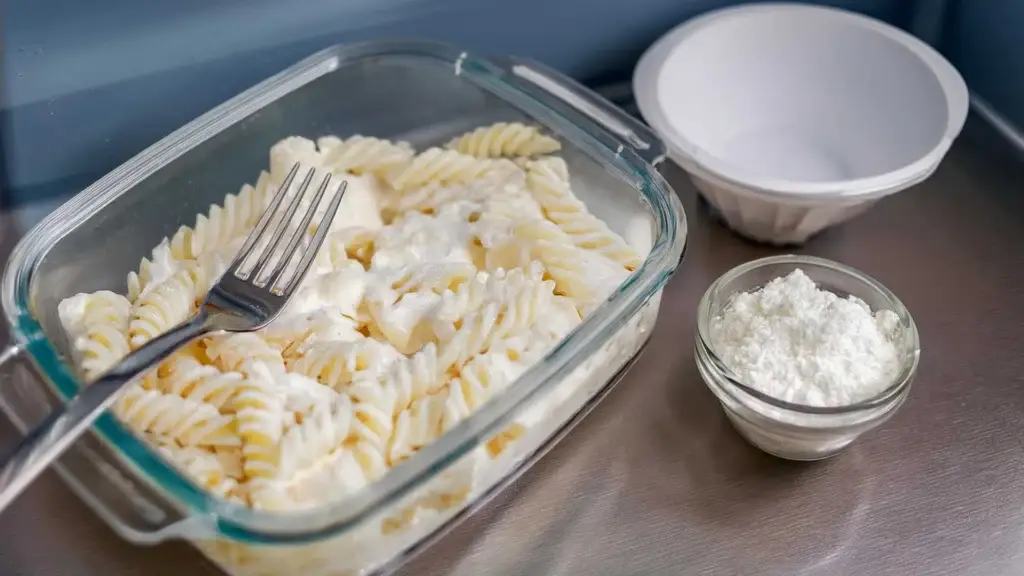
Yes. This airtight container, you shall be able to store this dish in the refrigerator for up to 3 days. Reheat on low heat, adding a splash of milk or water to restore the sauce’s creamy consistency.
7. Can I use flavored cottage cheese for pasta?
Plain cottage cheese is ideal for savory pasta dishes, but you can experiment with flavored varieties (e.g., garlic and herb) to complement specific recipes.







2 thoughts on “How to Make the Creamiest Cottage Cheese Pasta Sauce at Home”
Comments are closed.